Cedar Waxwings on San Juan Island
They were showing courtship behaviors
I see Cedar Waxwings in Tucson during the winter but never during the summer breeding season. That's what made this find so special. There was a small parking lot that led to the trails for both the 4th of July Beach and to Jakle's Beach Lagoon. We walked through the tall grasses to the 4th of July Beach one morning and, upon returning to the parking lot, saw a Cedar Waxwing in a short, nearby tree.
Cedar Waxwings are beautiful birds with a very unique appearance. There is a remarkably smooth and silky nature to their plumage. Their feathers are sleek and closely arranged so that they seem to blend together, creating a polished, almost porcelain-like surface.
I posted about Cedar Waxwings in Tucson in January of 2023. That post is worth a second look. It shows Cedar Waxwings feeding on palm tree fruit during non-breeding season and there is a good amount of detailed discussion about these birds. The pictures in today's post cover a very different subject: breeding season behavior.
In the photo above, you can see a male Cedar Waxwing on the left with a very teeny insect in his bill. A female Cedar Waxwing is to his right and showing her pleasure as she is about to accept this gift from him. This courtship feeding was repeated several times as I watched. Here is the female awaiting the return of her partner.
She was patient, looking back and forth while awaiting his return.
Her focus was very much on her partner and she didn't seem to care one bit about me standing behind a nearby automobile, inching closer and to the side to get better, more open photos. Birdnote describes this species as "sleek and handsome" .
Once again, the male returned with another 'gift' at the tip of his bill. While I observed this pair, the female remained on the left side of the tree and the male always arrived on the right side, spending a minute or two there before flying over to perch next to the female.
She greets him…..
...and accepts his gift.
And then I'll let each of you decide the caption for this shot.....
Cedar Waxwings are named after the waxy substance at the tips of their wings and at the ends of their tails. However, some young Cedar Waxwings do not have the red waxy substance at the tips of their wings and even some adults are missing those red tips. The birds in these photos do not appear to have red wax on their wings. The tips of their tails are yellow. It just goes to show there is some variation among this species.
FYI, here is the range map for Cedar Waxwings courtesy of the AllAboutBirds site:
I hope to see Cedar Waxwings again in Tucson this winter. Their local numbers here vary from year to year. Last winter's numbers were low so hopefully this coming winter's numbers will be greater.


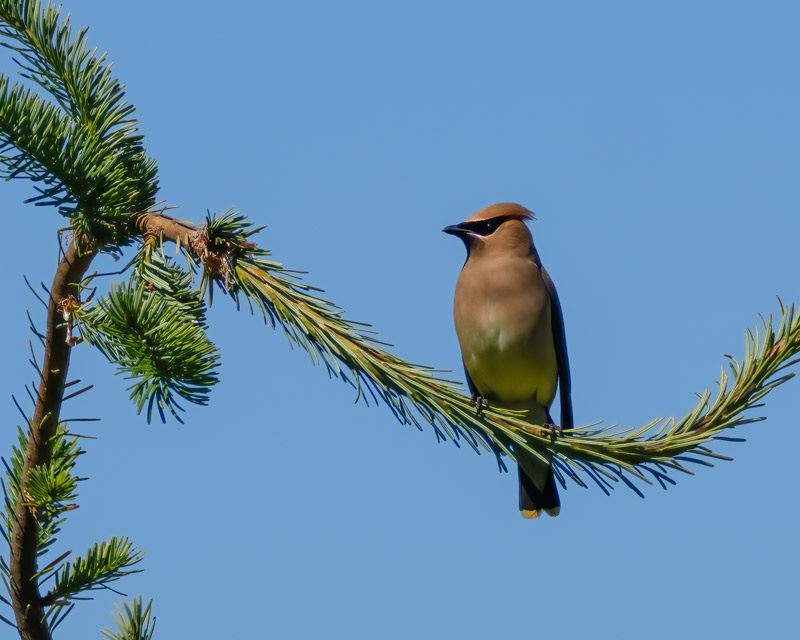
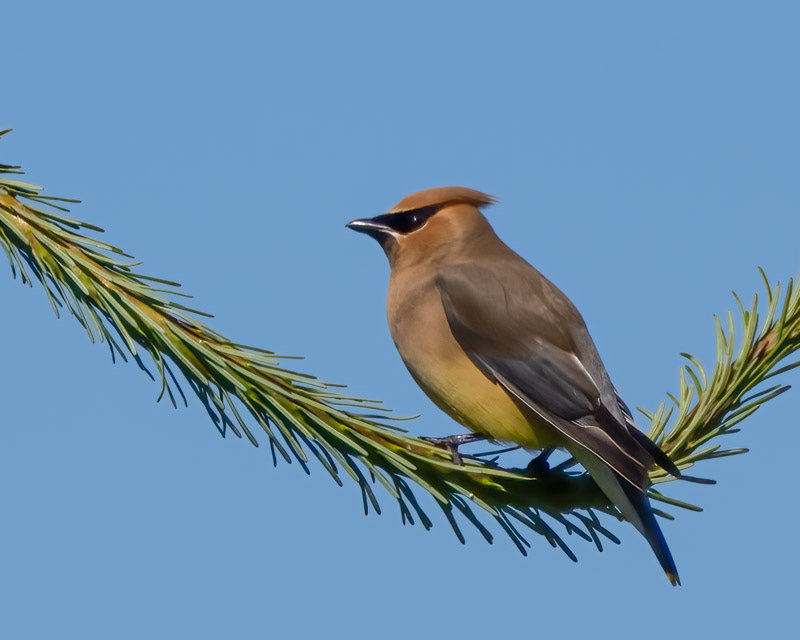
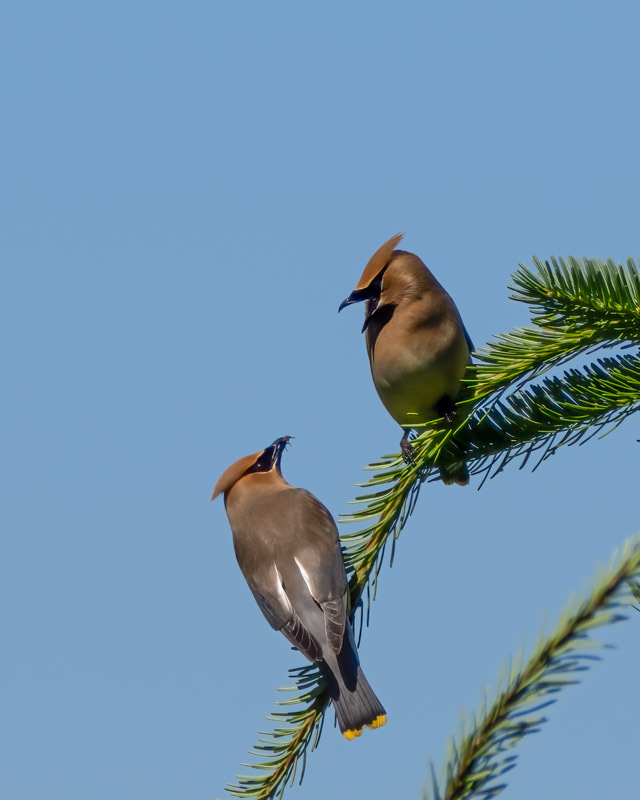
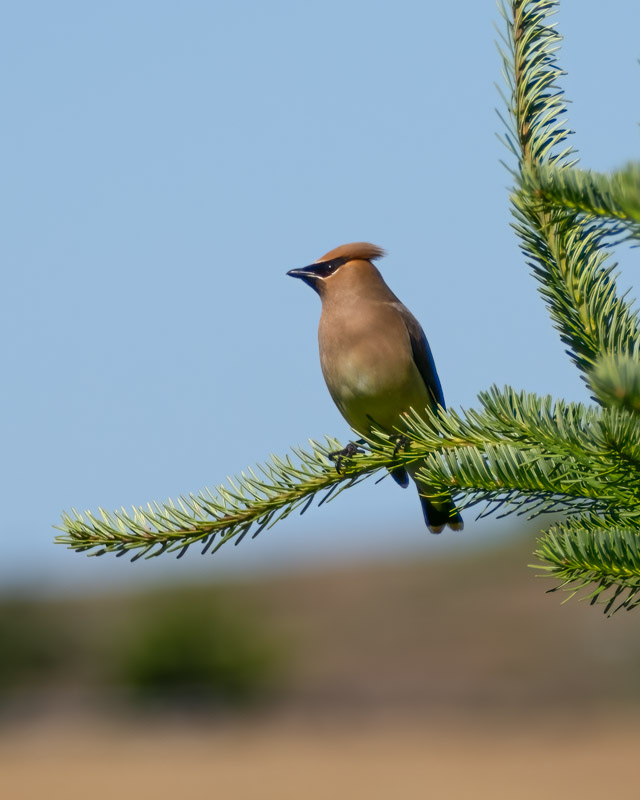
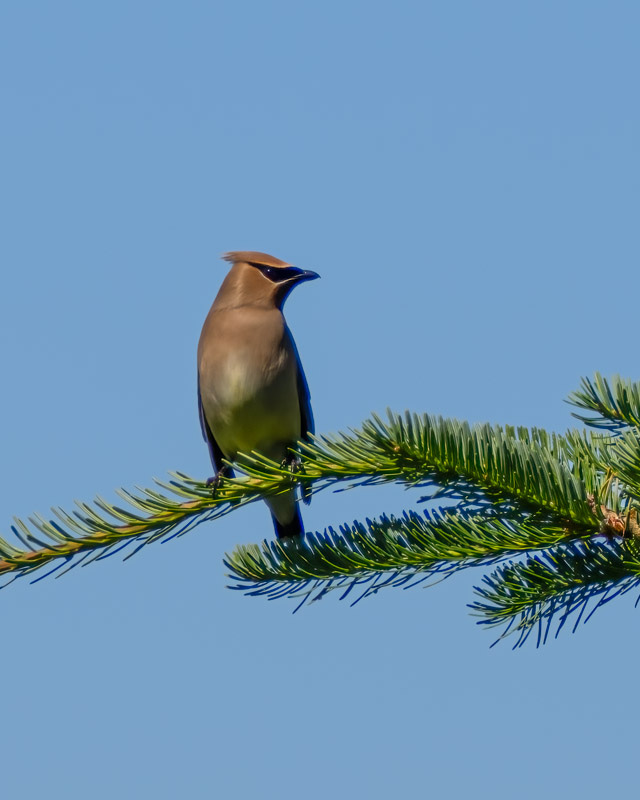
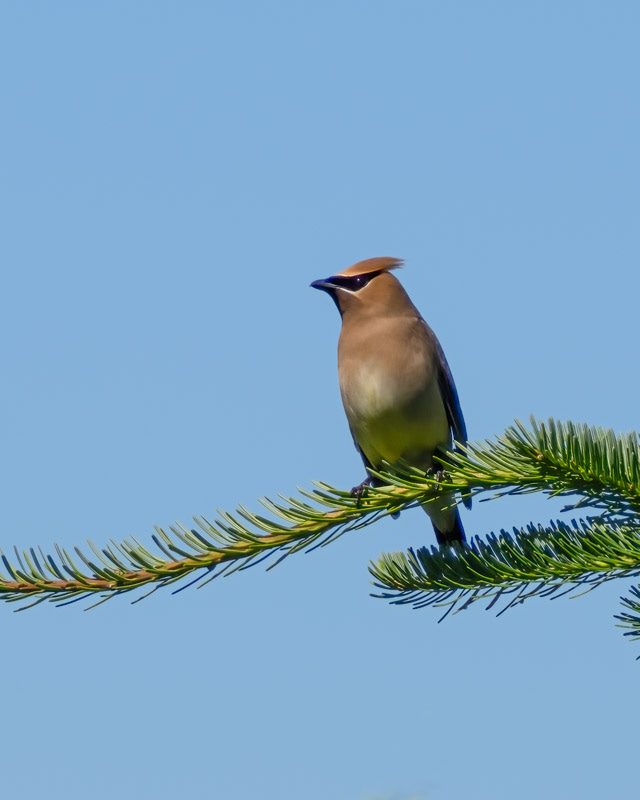
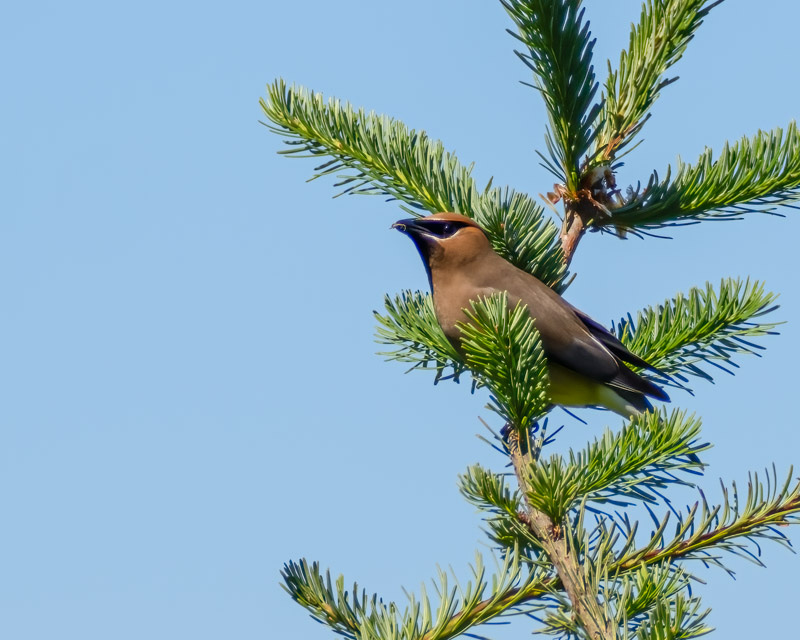
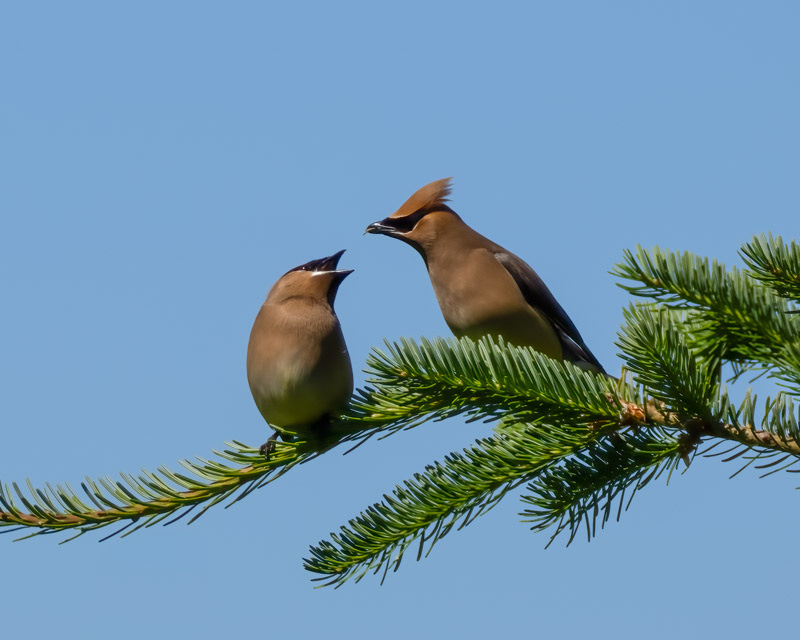
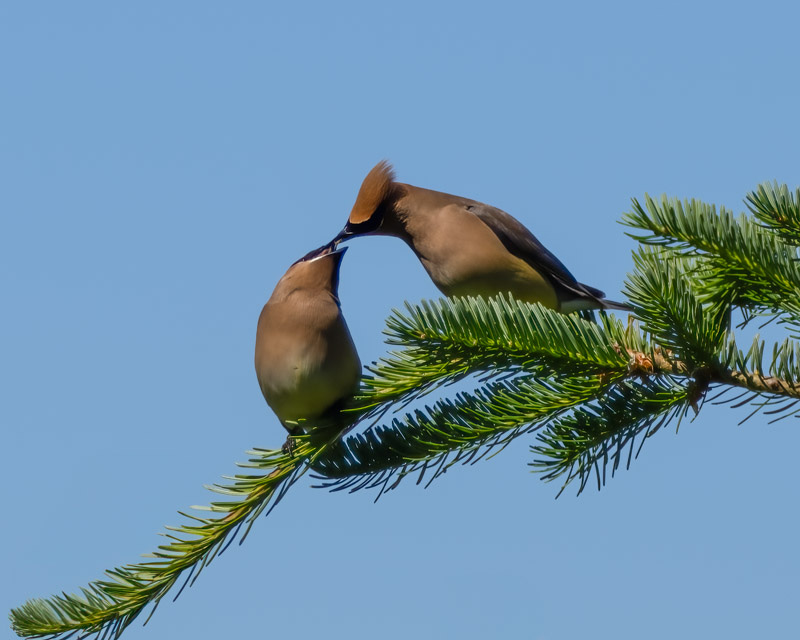
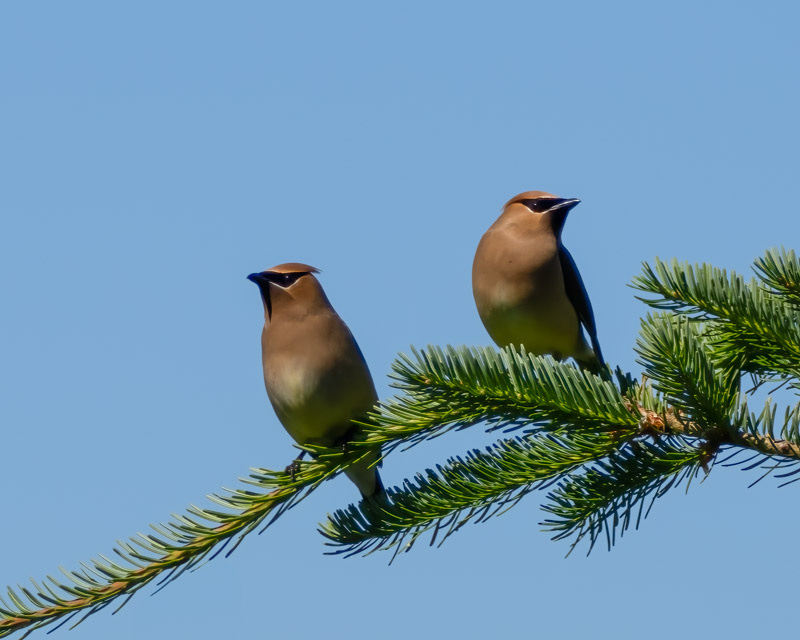
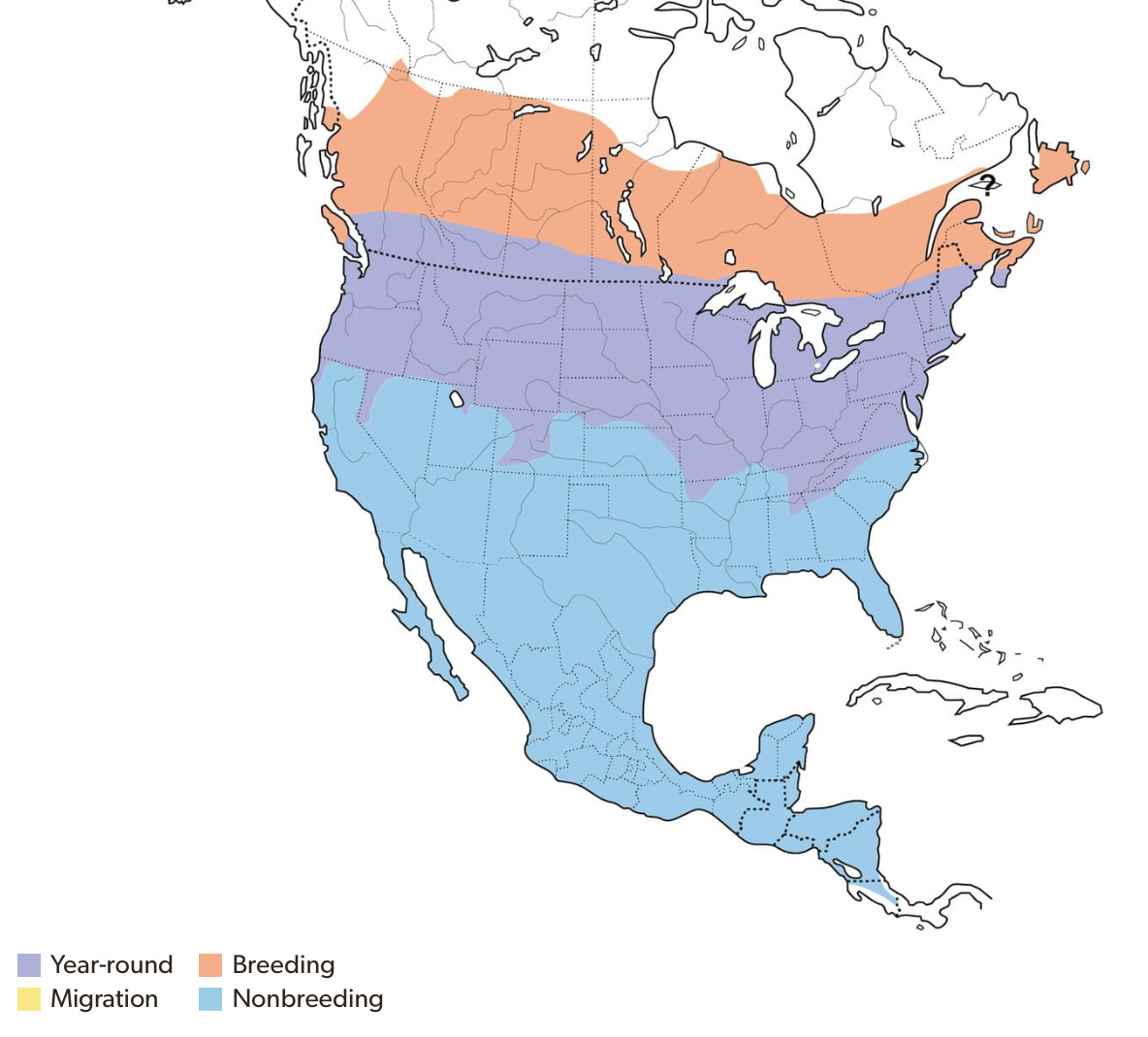
How cool that you were able to see them during breeding season. They are so smooth they look as if they were carved out of wood!
Such precious shots of a stunning bird. When I see them on my walks I feel very fortunate. It is few and far between. Thank you for sharing how they got their name.